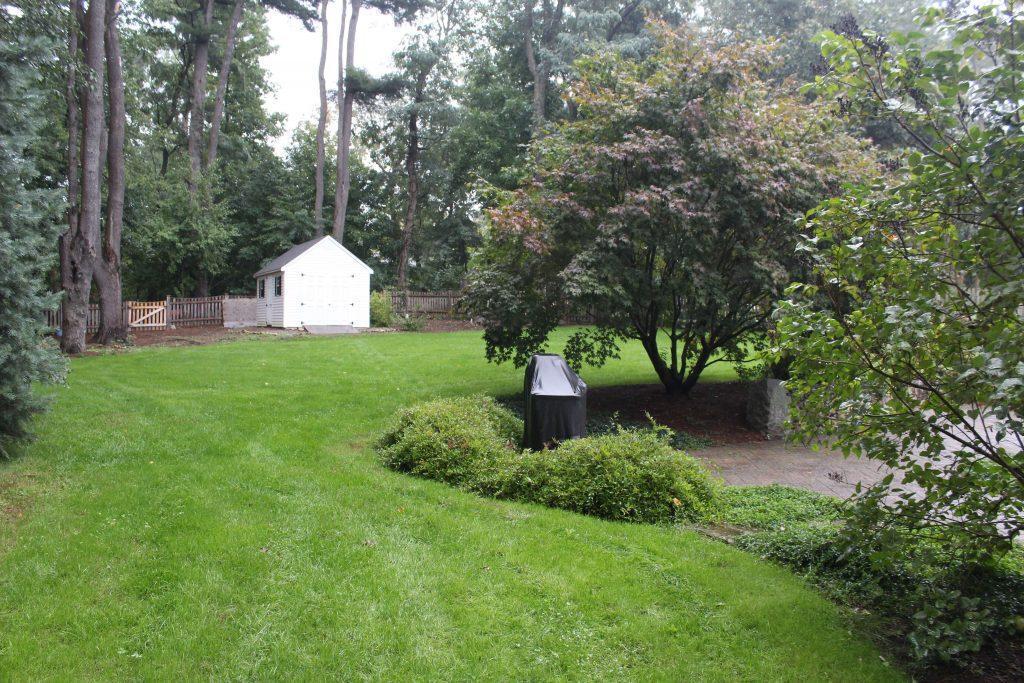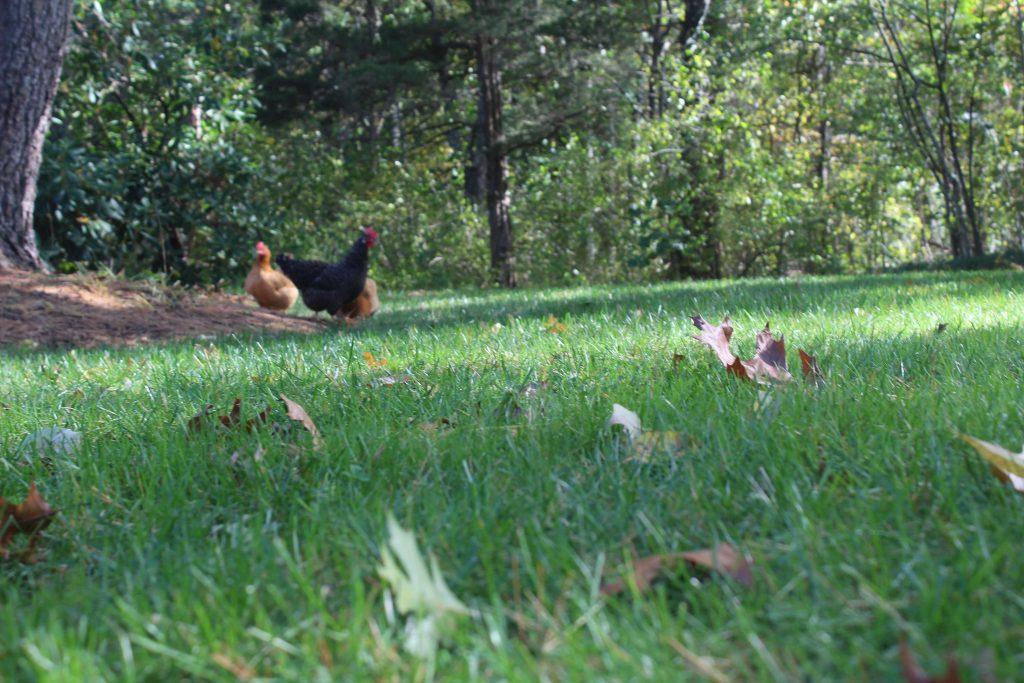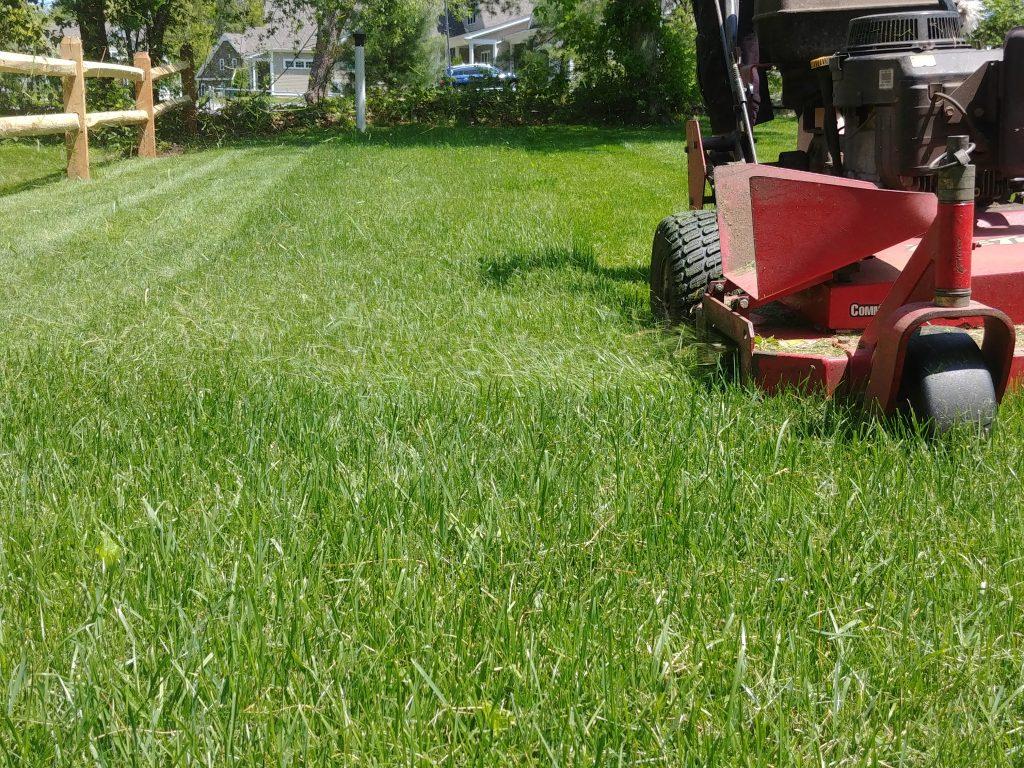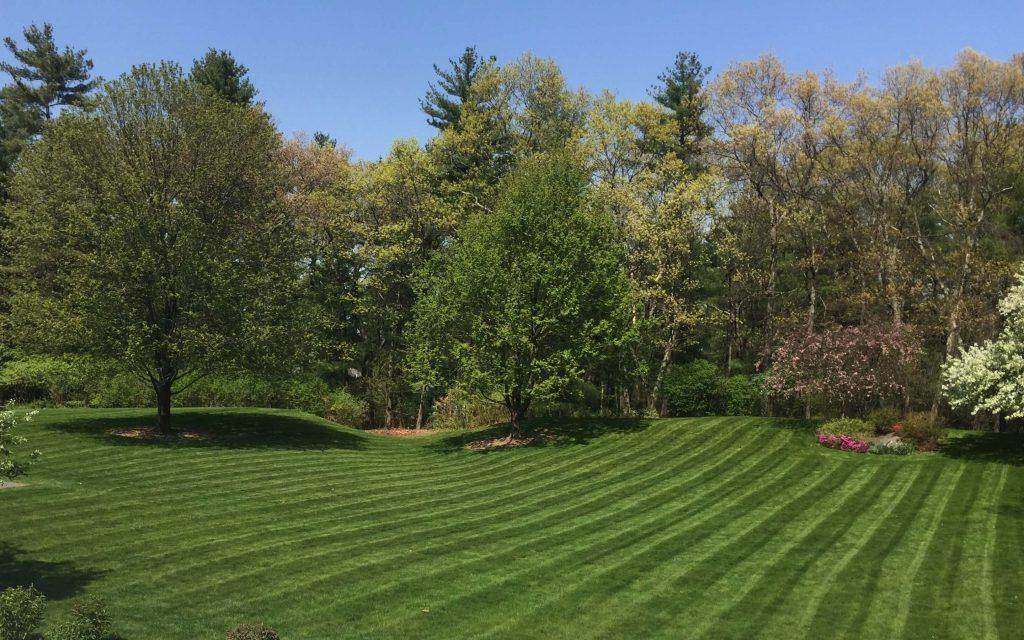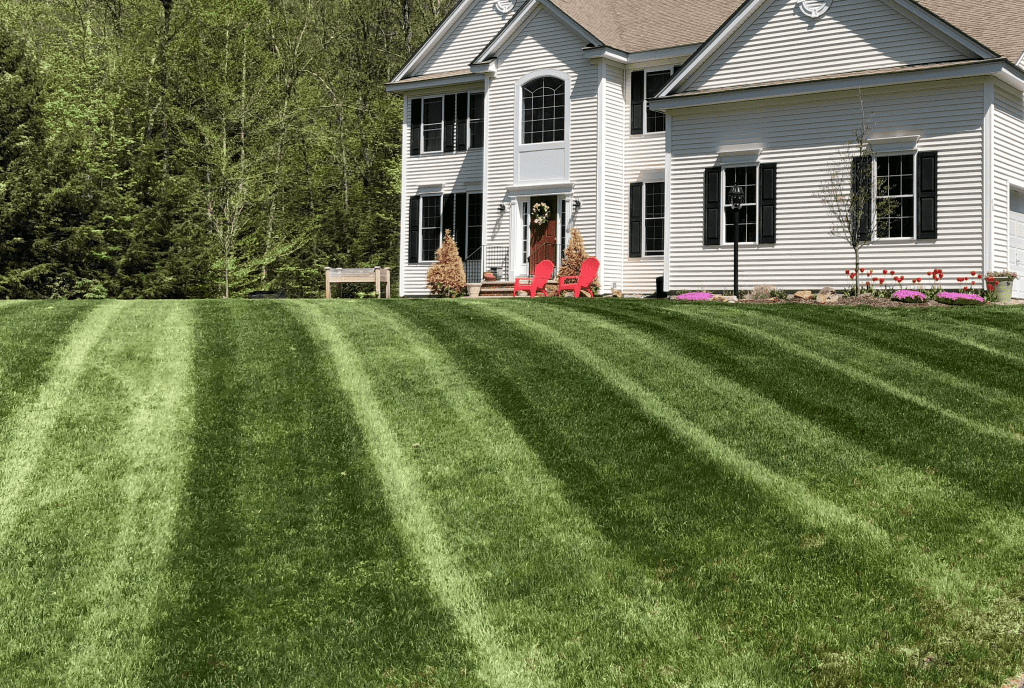10 Minute Read
When it comes to cultural practices and turf, this aspect can make or break your lawn’s success. Therefore, the 4th element of our Healthy Turf Circle is cultural practices. Your program can sink or swim if you don’t pay close attention to mowing, watering, aeration and over-seeding. It takes time to make significant changes to soil conditions. So, it’s important to get the cultural practices right to build year-over-year success.
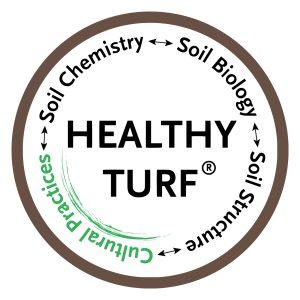
1. Mowing
Mowing plays a huge part in your program. It’s critical for keeping the integrity of the playing surface, and affects weed pressure. Your mowing height dictates the frequency with which you are cutting the turf grass. For optimal turf health, you don’t want to cut more than 1/3 of the turf plant. So, keeping a passive park cut around 31/2″ only requires a weekly mow. Conversely, mowing a lacrosse field at 2″ could require mowing up to 3x/week. Be sure that you are able to manage the labor demand for appropriate height of cut when deciding how you want to maintain your turf grass.
In addition, use sharp blades and replace or sharpen your blades after 8 hours of use to avoid tearing the turf plant and exposing it to disease. Be sure to only bag grass clippings when it is absolutely necessary. Returning clippings when weed seeds and flowers are not present is valuable in boosting your soil’s organic matter.
2. Watering
PJC has adopted the 1-2-3-2-1 Watering Method. Since summer drought and watering restrictions have become the new normal in the Northeast, you want to have a plan for irrigating. Ensure infrequent, deep watering to get the best level of performance from your fields and lawns. Ideally, watering should not exceed 1.25″/week and we consider 1″ of water to be optimal.

Be sure to audit your irrigation systems throughout the season to maximize coverage and efficiency. Our 1-2-3-2-1 table (pictured above) provides rough estimates for watering times for different style heads. It’s wise to test your systems using the “Tuna Can Test”. Run your system and start a timer to see how long it takes to fill the 1″ can. Then, divide the time by the frequency of watering per week.
More is not always better in the case of watering. Frequent shallow watering results in shallow roots and higher competition from undesired turf species, fungus, and weeds. We want deep root watering to create an enduring turf stand. In spring and fall, dial those systems back to 1x/ week and let nature run its course with rainfall. In summer drought, 3x/week is necessary (when allowed). Deep watering encourages turf plant roots to “search” for water and forces roots to grow deeper into the soil profile.
3. Aeration
Aeration is the mechanical method to alleviate compaction and get essential nutrients directly into the rhizosphere. It also allows for better air movement and water movement in the soil profile. Mechanical aeration is the most effective way to address compaction, particularly on sports fields.
Home lawns don’t always see the level of abuse as athletic fields, and in most cases we recommend 1 fall aeration per season. While soil microorganisms do an outstanding job of keeping pore space maximized in the soil, they often can’t keep up with high use areas. Therefore, high performance athletic fields therefore require timely aerations throughout the season. Turf plant roots grow in the pore space of the soil, so keeping a spacious home for them will pay massive dividends year after year.
4. Over-seeding
At PJC Organic, we want you to take advantage of the labor intensity of aeration and therefore recommend over-seeding with aeration. It’s so important to get seed-to-soil contact and establish new turf plants to crowd out weeds. While that may seem cost prohibitive, it’s important to understand why you need to over-seed every year and more specifically, multiple times per year.
Turf plants get tired as they age. Introducing new turf plants and species brings vitality and vigor into your turf stand. Additionally, seed engineers are always working to develop new turf species that are more drought tolerant and require less fertilizer. So, consistently introducing the latest cultivars keeps your turf evolving with the ever-changing environmental challenges we face today. Different turf varieties have different germination and establishment periods. Germination and establishment can range anywhere from 1-6 weeks and 9 months to 12 months respectively. Therefore, utilizing the right seed blends at the right time of the year is critical to your success. The seed you sow in the spring is going to be your top performer the following spring.
5. Weed Management
When you are looking at weeds present in your lawn, ask yourself: “Why is this weed here?” The answer always comes back to the underlying soil conditions. More often than not, unsightly weeds are a result of soil conditions not being favorable to growing turf grass, particularly as it relates to soil pH. Highly acidic and highly alkaline soils bind plant available nutrients.
Often calcium—a macronutrient—becomes unavailable. Consequently, we see plants such as plantain and dandelion thrive due to their ability to “break” soil with large tap roots and make calcium available to themselves. Dreaded crabgrass does an outstanding job competing with its prostrate growth habit and ability to reproduce rapidly. A combination of poor soil, drought conditions and poor performing turf grass allow for crabgrass to proliferate. “Grassy weeds”—such as poa annua—thrive in wet soil conditions and typically burn out in the summer, but its ability to reproduce keeps this annual weed spreading throughout your lawn and fields.
Notice a trend? By mowing high, watering appropriately, and addressing soil fertility and pH you are going to grow healthier turf grass. Moreover, synthetic herbicides are carcinogenic and have antibiotic properties – leaving devastating impacts on users, applicators, the environment and the underlying soil microorganisms. There’s no place for herbicidal methods in an organic turf care program. While the market is shifting and more organic options are becoming available, we caution you to ask yourself: “Am I growing the best turf grass I can?”. If the answer is no, then continue to dial in your cultural practices to grow healthier turf grass.
6. Turf Blankets
If you are knocking it out on all the above cultural practices, turf blankets will bring your fields to the next level. Turf blankets are an amazing tool to cheat the cold and capture as much sun as you can over the winter months. Turf blankets have proven to be effective in early spring green up and giving a competitive edge to turf grass coming out of winter. They will help especially with faster germination in the spring for early season seeding, or late fall over-seeding.
While temperatures don’t always cooperate in the spring to get your turf awake, turf blankets allow for air movement between the field and atmosphere. All the while, turf blankets capture and retain heat to make your field think it’s much warmer outside. They gained most of their popularity in golf courses and their efficacy has expanded to other sport disciplines. PJC requires the use of turf blankets in our High-Performance fields. Trouble areas like goal mouths, face-off circles, baseball infields, and “between the hashes” take abuse early and often in the spring. Turf blankets are a great investment to growing turf grass, they are inexpensive and yield high quality results year after year.
Our Healthy Turf Circle was carefully crafted by examining years of research. The combination of Soil Chemistry, Soil Biology, Soil Structure and Cultural Practices creates a holistic approach to organic turf care management. The success of your organic turf care program lies in your ability to maximize components of the Healthy Turf Circle and address each aspect each year.


